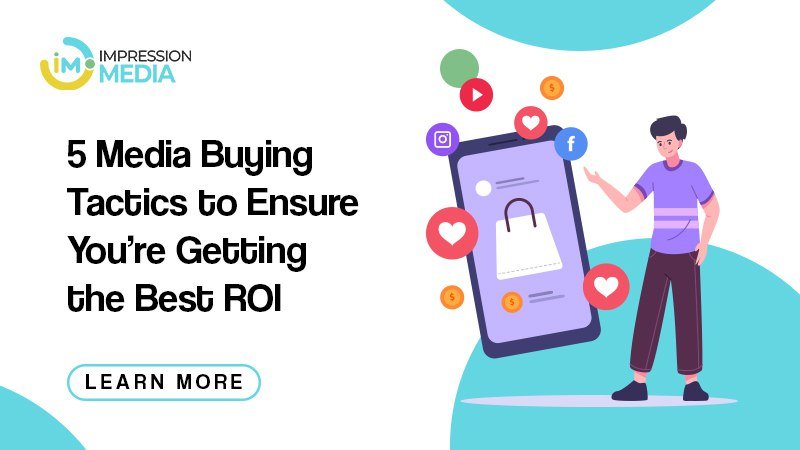Media Buying Tactics to Ensure You’re Getting the Best ROI

In today’s competitive digital marketing landscape, simply
spending on ads isn’t enough. To truly maximize your return on investment
(ROI), you need a strategic approach to media buying. Whether you're working
with social media ads, search ads, or display networks, smart media buying
tactics ensure your budget is spent effectively. Here are five essential media
buying tactics to get the best ROI for your campaigns.
1. Define Clear Objectives and KPIs
Before investing in any ad campaign, you need a clear
understanding of what you want to achieve. Are you aiming for brand awareness,
lead generation, or direct sales? Define your goals and establish Key
Performance Indicators (KPIs) to measure success. Examples of KPIs include:
- Cost
Per Acquisition (CPA) — How much does it cost to acquire a new
customer?
- Return
on Ad Spend (ROAS) — How much revenue do you generate for every dollar
spent on ads?
- Click-Through
Rate (CTR) — How often are people clicking your ads?
Having clear objectives helps you allocate your budget to
the channels and strategies that deliver results.
2. Leverage Data-Driven Insights
Successful media buying relies on data. Use insights from
previous campaigns to understand your audience's behavior and preferences.
Tools like Google Analytics, Facebook Insights, and third-party platforms can
help you identify demographics, interests, and peak engagement times.
Data-driven targeting allows you to refine your audience
segments and tailor your ads for better performance. The more precise your
targeting, the higher your chances of conversion.
3. Diversify Your Ad Platforms
Don’t put all your advertising budget into a single
platform. While Facebook and Google are popular choices, your target audience
may be active on other platforms like LinkedIn, Twitter, or even TikTok.
Diversifying your ad spend helps you reach a broader audience and reduces the
risk of relying too heavily on one channel.
Test multiple platforms to see which ones generate the best
results for your business. Diversification also helps you adapt to platform
changes or shifts in audience behavior.
4. Optimize Ad Placement and Timing
Where and when your ads are displayed can significantly
impact your ROI. Some platforms offer automated placement options, but it’s
essential to review where your ads are appearing. Ensure that your ads are
displayed on high-quality websites, apps, or social media feeds relevant to
your audience.
Timing is also crucial. Analyze your audience's behavior to
determine the best times for ad delivery. For example, B2B ads might perform
better during working hours, while B2C ads may excel during evenings or
weekends.
5. Continuously Monitor and Adjust Campaigns
Real-time monitoring is essential for optimizing ad
performance. Use analytics dashboards to track how your campaigns are
performing against your KPIs. If an ad isn’t performing well, don’t hesitate to
pause it and reallocate the budget to better-performing ads.
A/B testing different creatives, headlines, and CTAs (calls
to action) helps you identify what resonates most with your audience.
Continuous optimization ensures that your budget is spent on strategies that
deliver the best ROI.
Conclusion
Maximizing ROI through media buying requires a strategic approach.
By setting clear objectives, leveraging data-driven insights, diversifying
platforms, optimizing placements, and continuously monitoring performance, you
can ensure your advertising dollars work harder for you.
